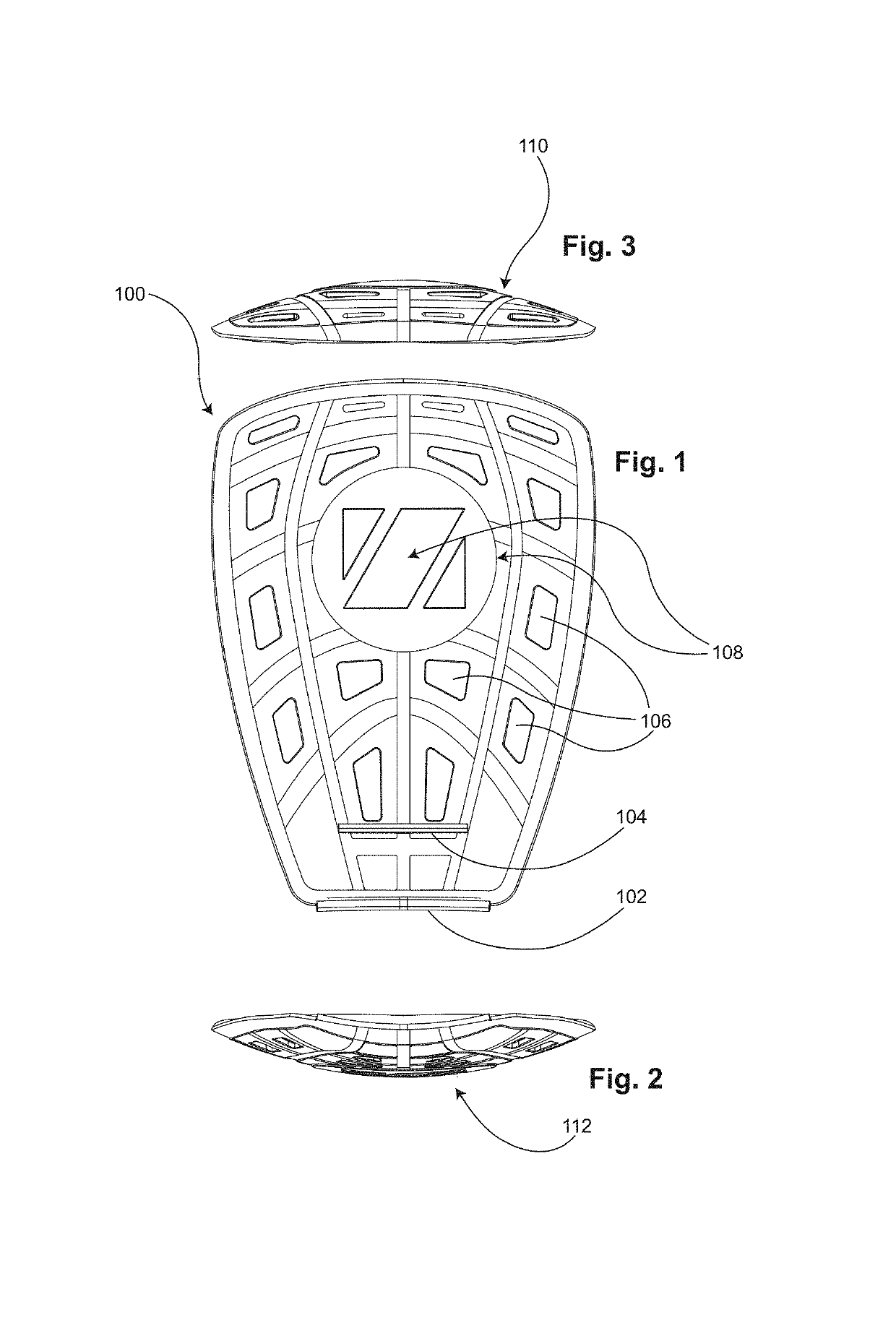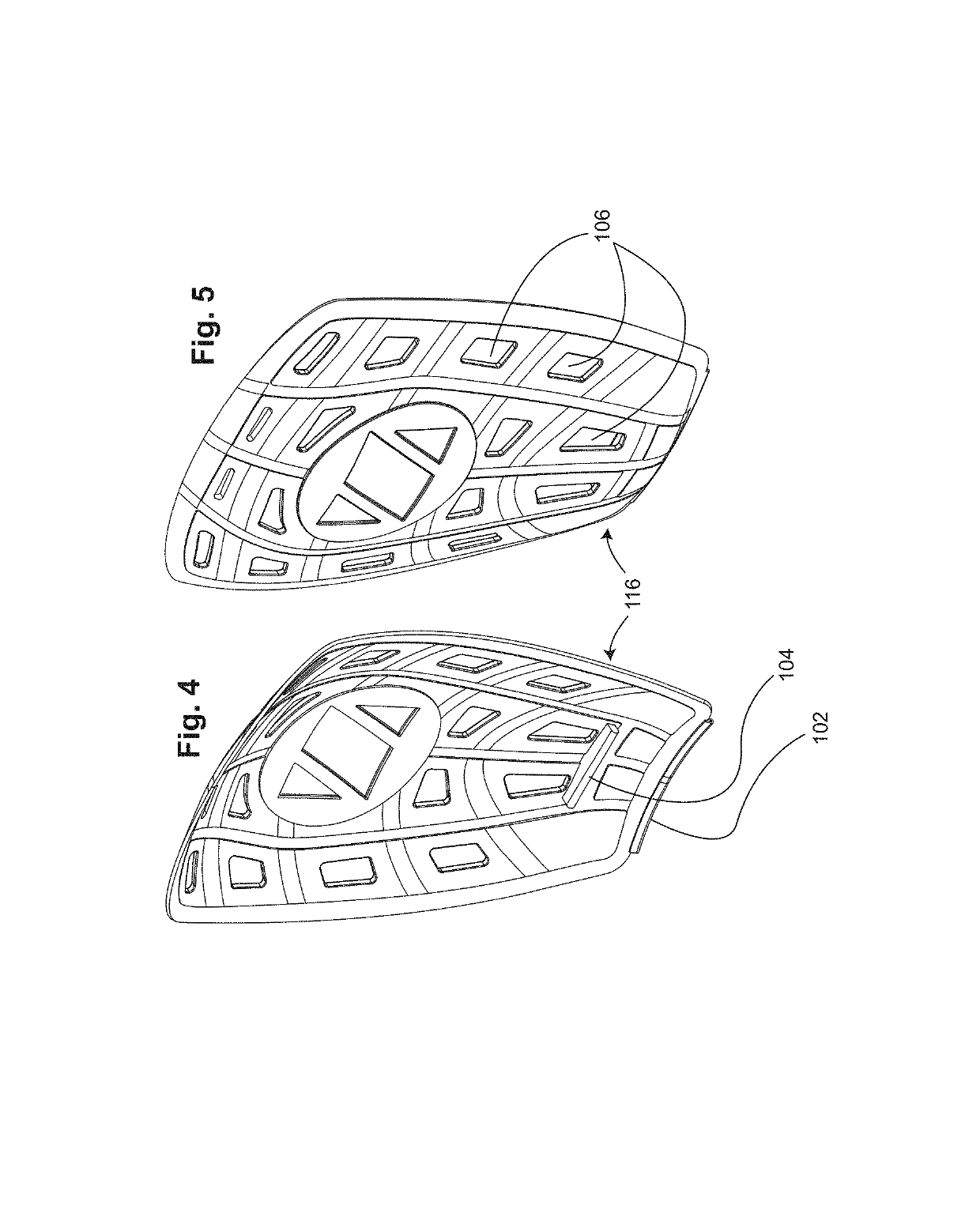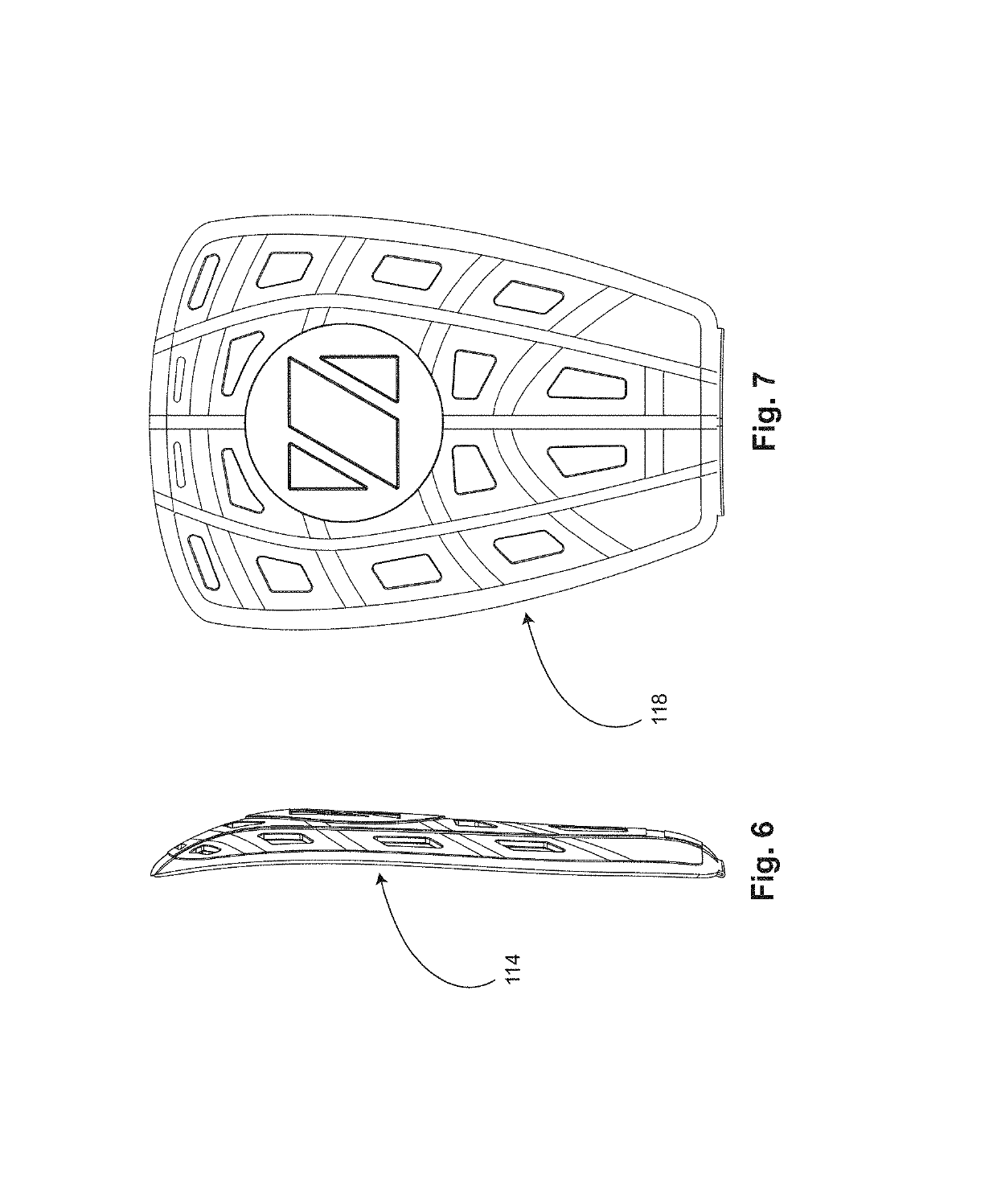Life jacket with visual awareness safety accessory
a safety accessory and life jacket technology, applied in life-saving, waterborne vessels, vessel safety, etc., can solve the problems of not giving the current pfd device does not give the wearer additional visibility, and the rider/wearer is traveling at relatively fast speeds, so as to prevent the accidental impact of a floating person, prevent the injury of the rider/wearer, and prevent accidental impacts
- Summary
- Abstract
- Description
- Claims
- Application Information
AI Technical Summary
Benefits of technology
Problems solved by technology
Method used
Image
Examples
Embodiment Construction
:
[0048]Reference will now be made in detail to exemplary embodiments and methods of the invention as illustrated in the accompanying drawings. It should be noted, however, that the invention in its broader aspects is not limited to the specific details as set forth herein.
[0049]The core components of the VASA invention are: 1. A brightly colored waterproof cape or flag-like device; 2. A separate or combined waterproof float that lifts the colorful cape up high out of the water, once the wearer is floating in the water. This device makes the individual much more visible to those who need to spot them quickly from a much further distance away or if the waves are higher than the rider / wearer's head. These core components are attached to an existing PFD by waterproof fabric or other material by sewing, Velcro or other means, which, generally speaking, are configured as follows:
[0050]A. The bright colorful cape or safety awareness flag is attached (hinged) at the top back side of the exi...
PUM
 Login to View More
Login to View More Abstract
Description
Claims
Application Information
 Login to View More
Login to View More - R&D
- Intellectual Property
- Life Sciences
- Materials
- Tech Scout
- Unparalleled Data Quality
- Higher Quality Content
- 60% Fewer Hallucinations
Browse by: Latest US Patents, China's latest patents, Technical Efficacy Thesaurus, Application Domain, Technology Topic, Popular Technical Reports.
© 2025 PatSnap. All rights reserved.Legal|Privacy policy|Modern Slavery Act Transparency Statement|Sitemap|About US| Contact US: help@patsnap.com



